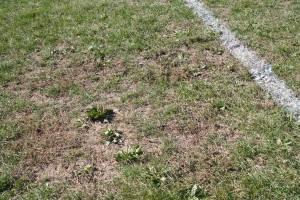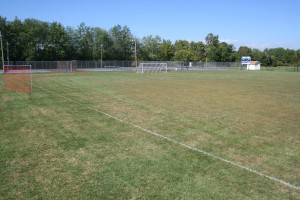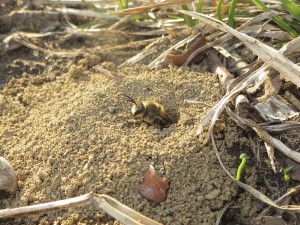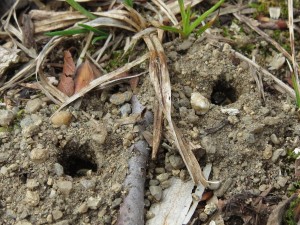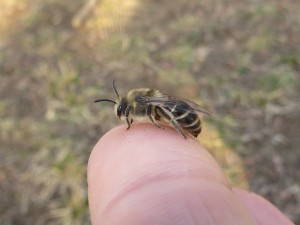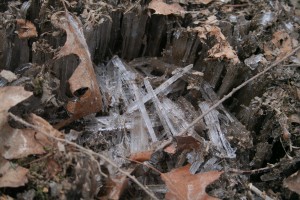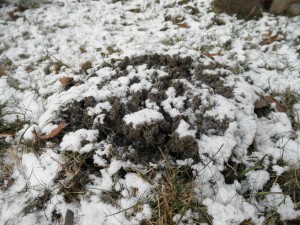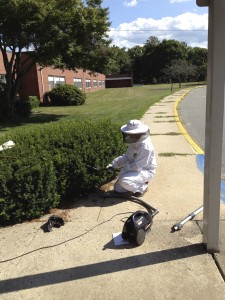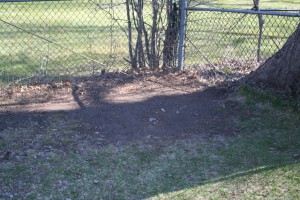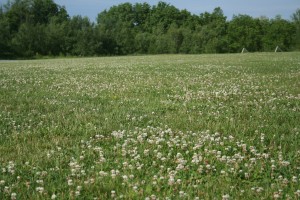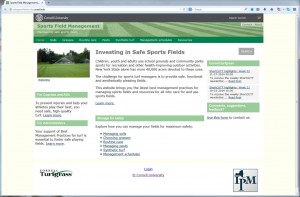“Of all the seasons, autumn offers the most to man and requires the least of him.” – Hal Borland
No disrespect to Mr. Borland, but he obviously was not in charge of keeping school athletic fields in good shape. While autumn can bring some of the best grass growing weather, when our cool season turf really thrives, it also brings students on the fields for recess, practice, physical education, and games. That can lead to a great amount of compaction and wear and tear. Combine heavy traffic with this year’s drought, and Autumn 2015 promises to be challenging.
The Child Safe Playing Fields Act was implemented in 2011 to reduce the impact of pesticides on students. While we are confident that we can reduce the impact of insects and weeds on athletic fields with good cultural practices, the Act failed to bolster school budgets, which often do not reflect the need for providing more training for staff, equipment, irrigation, and materials such as fertilizer and seed needed to produce safe fields. Without these resources, weeds, which cannot handle the same traffic as grass, can overtake a field. As the season progresses, these weedy areas become bare, leaving much more slippery and harder patches behind.
So what is the minimum that should be done now to minimize the likelihood of injury?
- Mowing -If the grass is growing, mowing should be conducted at least twice a week. Mowing increases shoot density by increasing tillering (stems that develop from the crown of the parent plant). More tillers means more traction and cushioning.
- Fertilizing -Apply 1 pound of 50% water soluble nitrogen per 1,000 sq. ft. in September and ½ pound of 100% water soluble nitrogen in mid-October. Note – if you do not have irrigation, it is worth waiting until the day before rain is predicted to ensure the fertilizer is watered in.
- Overseeding -Seed perennial rye at 2 pounds per 1,000 sq. ft. weekly in high-use areas. The athletes’ cleats will make the necessary seed to soil contact. Again, this year’s drought makes this practice tricky. If you can borrow irrigation equipment, do so.
What if I can do more than the minimum?
- Watering -Maintain adequate soil moisture but keep surfaces dry to maximize traffic tolerance. Irrigate if you can see your foot prints after walking on the turf.
- Fertilizing -Conduct a soil test to see if other nutrients are needed in addition to the nitrogen.
- Cultivating -Concentrating on high-use areas, solid tine cultivate in multiple directions to maintain infiltration of air and water.
- Overseeding -Have a mixture of one part seed to ten parts soil available so coaches and players can repair divots left after heavy use.
For more information on maintaining safe, functional athletic fields, visit http://safesportsfields.cals.cornell.edu. You will find different maintenance schedules based on number of seasons used and resources available, detailed information on different management practices, and information on “Duty of Care”, a legal obligation to a standard of reasonable care.

